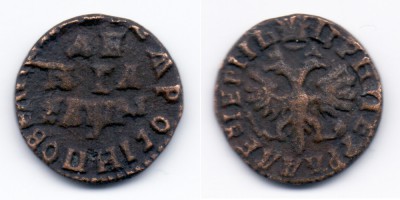To ensure the Russian market
Minted in 1714 coins were intended for operations in the domestic Russian market.
The Mint produced traditional coins:
- ruble;
- Altyn;
- penny;
- 5 kopecks;
- dengue;
- polushk.
Copper or silver was used for all coins (except gold gold coins). Silver coins were produced less, because the raw materials for them were quite expensive.
However, in 1714, the Monetary Double issued "trial coins" of silver:
- 1 ruble;
- 1 penny.
Russian gold in Europe
The first half of the 17th century is characterized by the growth of economic ties. Under Peter the First, Russia declares itself quite confidently. Peter the Great is trying to acquire business partners abroad, and sometimes he does this despite personal sympathies and even despite his own disgust. Arrogant Europe did not hide the ridicule, so Peter the Great in the calculations with foreigners used the glittering Russian gold coins.
How Europeans liked them! The ringing Russian gold of the highest standard became a symbol of the wealth and power of Russia. In addition, chervonets were used to reward natives of the people. And there was no honorable award for distinguished people's representatives. Chervonny was taken care of for years, passing by inheritance and considering a family heirloom.
The monetary reform that Peter the Great carried out did not practically touch the chervonets. Wire pennies of handheld engravings and the round coins that had already been replaced with them were already necessary for circulation in the domestic market. Being in everyday use, they had the ability to darken from constant mechanical impact, so the people were popular recipes for their purification. Chervonets same sparkled with pristine freshness always.
Showing 1 to 2 of 2 (1 Pages)
 Russian
Russian English
English Deutsch
Deutsch Spanish
Spanish Português
Português



